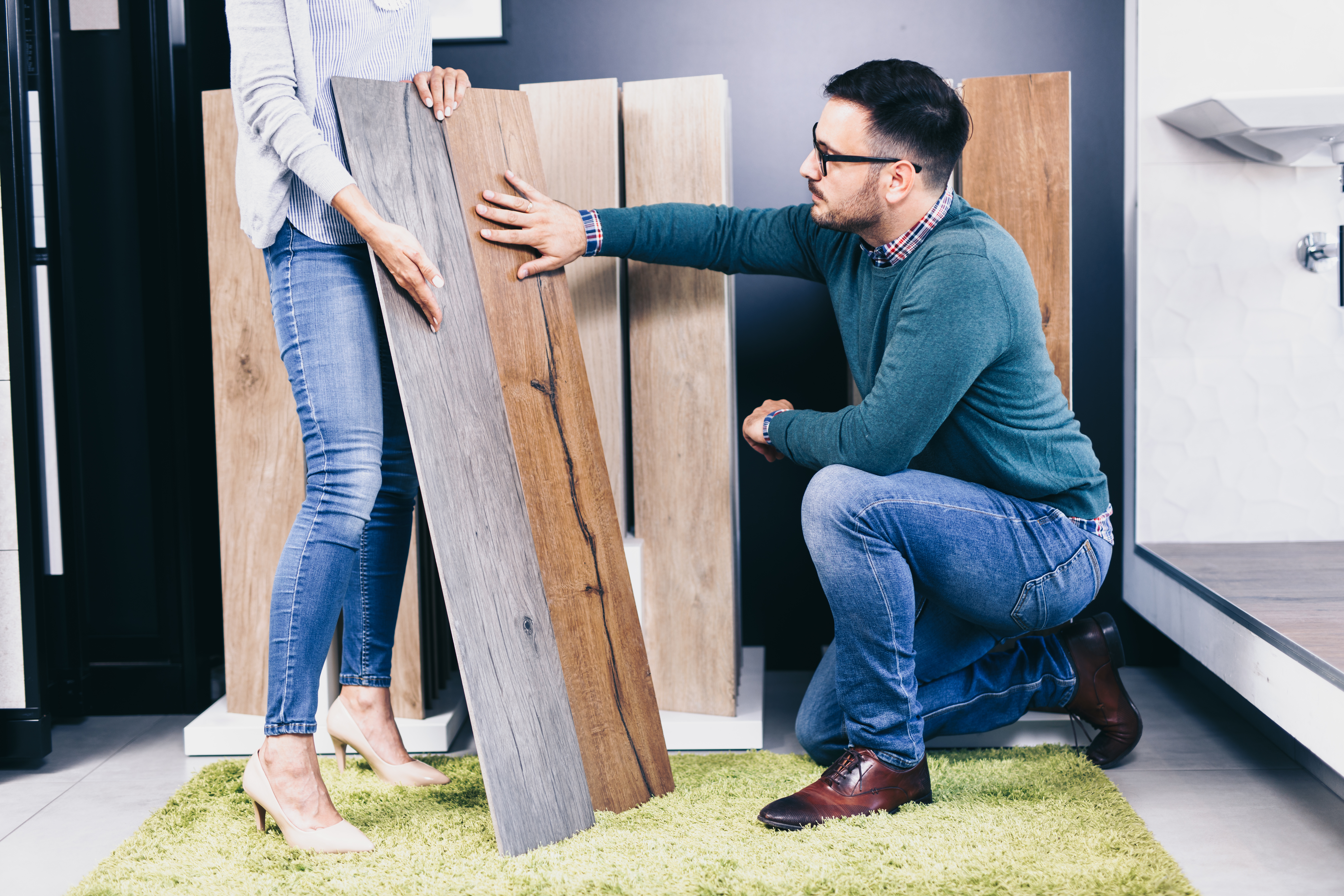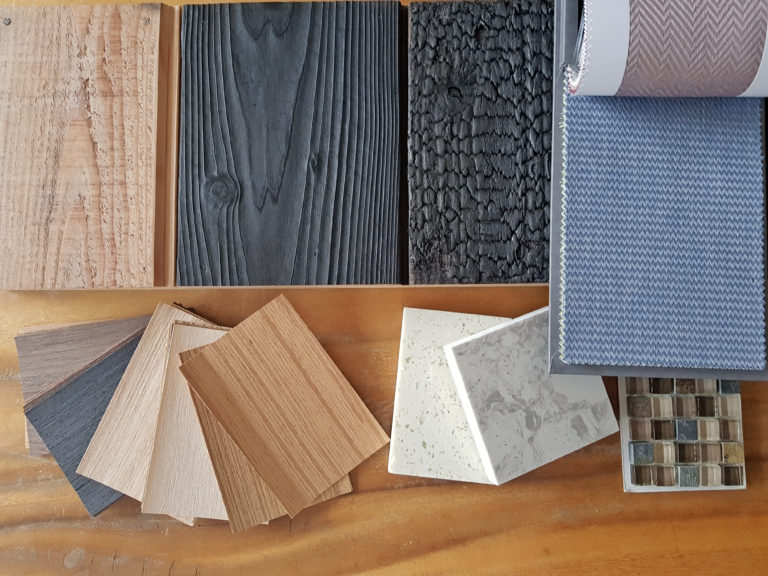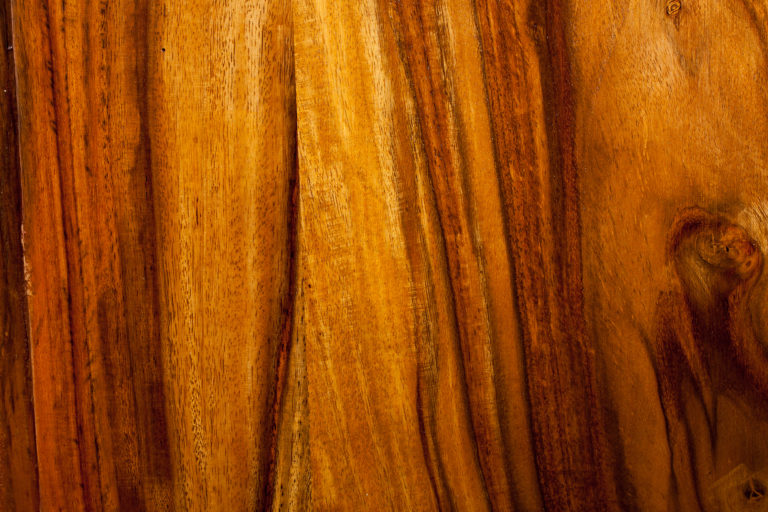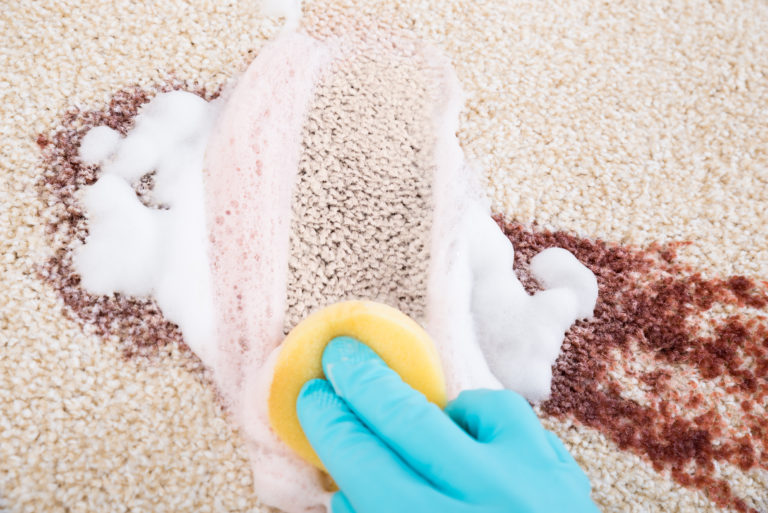This post may contain references or links to products from one or more partners of our parent company and/or subsidiaries of our parent company. For more information, visit this page.
March 9, 2020
Thinking about updating your home with some snazzy new wood-look floors? Congratulations, friend—you’ve come to the right place! We love daydreaming about the cozy charm of a new wood surface. But if you’ve been researching laminate vs. hardwood floor types, you probably have some questions.
It’s understandable. The laminate vs. hardwood flooring debate is common. Though they have a similar appearance, these types of flooring are actually pretty different. But don’t worry: we’re here to answer all of your questions!
We’re going to talk about laminate vs. hardwood composition. We’re going to talk laminate vs. hardwood cost. We’ll even get into installation, maintenance, look, feel, and durability.
We take our flooring seriously! And we’re going to help you decide between laminate and hardwood floors.
The Difference Between Laminate and Hardwood
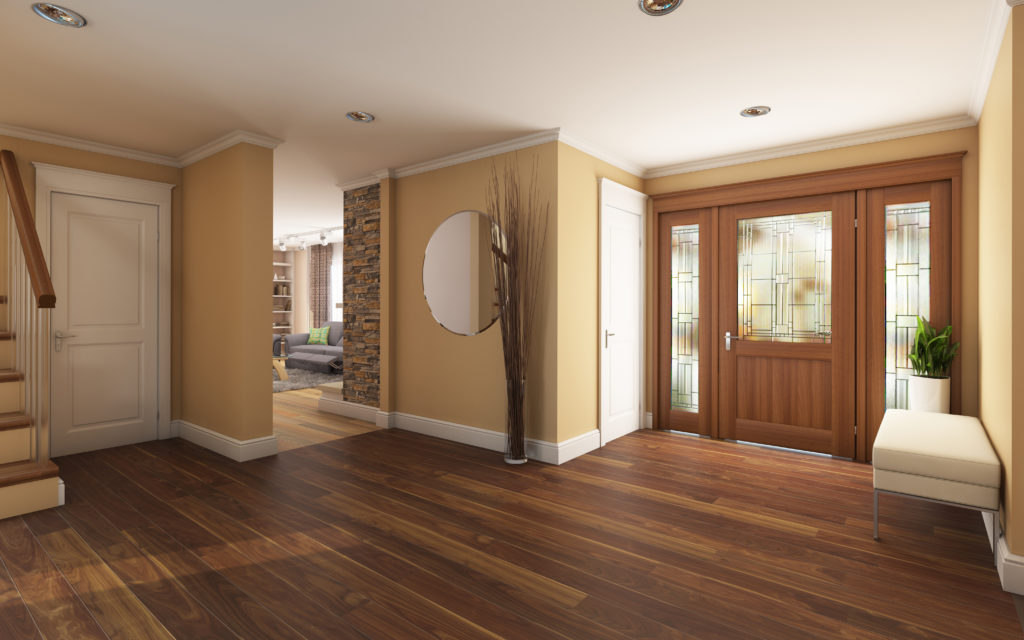
On the surface (pun intended) laminate and hardwood can have a similar look. But as you already know, they’re a bit different underneath.
What is laminate flooring made of?
Laminate is a manufactured flooring with a 3-layer composition:
- The bottom layer is made up of plywood or fiberboard, which provides structure.
- The second layer is called the image or photo layer. It can look like any number of materials—stone, fabric, marble, and of course, wood!
- The top layer is made from a hard plasticate and is called the wear layer. The wear layer has come a long way in recent years with increased resistance to fading, water, and scratches.
What’s the difference between solid hardwood and engineered hardwood?
Solid hardwood is made from, well, you probably already guessed—hardwood. The boards are one solid material throughout and are usually about ¾ inch thick.
Engineered hardwood has a 2-part composition and the boards are usually ½ to ⅜ inch thick:
- The bottom layer is made of plywood or fiberboard. As with laminate flooring, this layer provides the structure.
- The top layer is a thin piece of solid hardwood called veneer.
Best Brands of 2024
When debating between a laminate vs. hardwood floor, people are usually debating laminate vs. engineered hardwood
Laminate vs. engineered hardwood similarities
Both laminate and engineered hardwood floors are click-together flooring—meaning installation is easy (though we’ll talk about that a bit more later on). And both floors are made up of multiple layers with a rigid fiberboard or plywood base.
Plus (and this is a big one), laminate and engineered wood flooring can tolerate temperature changes and humidity, much more than solid wood planks can. That’s why you can still enjoy the luxury of wood floors in your bathroom or even basement—as long as they don’t get saturated with water, of course!
Laminate vs. engineered hardwood differences
That plasticate wear layer of laminate makes it super durable (we’ll also talk about this further down), whereas the top layer of engineered wood is just that: wood! Depending on the finish, it may scratch or dent easier than laminate—but this highly depends on the type of wood and the finish used.
And thanks to amazing increases in technology, your guests may never know the difference between a real wood finish and a laminate photo layer.
Laminate vs. Hardwood Cost
When it comes to laminate vs. hardwood cost, there’s definitely a wide range. Our advice: make sure to find a flooring dealer near you to discuss the differences in quality between each of these materials. A small investment now may save you a bigger investment down the road.
How much does laminate flooring cost before installation?
Laminate ranges from $1 to $10 per square foot. The price range reflects quality above all else. Higher-quality brands and styles will offer more advantages, like better durability and a more realistic photo layer.
How much does solid hardwood flooring cost before installation?
It really depends on the type of wood you want, but for most wood flooring types, you’re looking at $3 to $10 per square foot. More exotic tree species—like mahogany or teak—raise the cost up to $15 per square foot or more.
How much does engineered hardwood flooring cost before installation?
The cost of engineered hardwood is similar to the cost of solid hardwood—with common tree species like maple or oak coming in around $3 to $10 per square foot. Exotic species will cost a bit more. But you will save compared to solid hardwood, since engineered planks require less wood. Fun fact: according to Forbes, engineered wood floors are a more environmentally friendly option!
Just remember to factor in installation costs
Installation cost can be a game-changer when it comes to the financial bottom line of any type of flooring. Your best bet is to contact a flooring store in your area to get an accurate quote for your project.
Laminate vs. Hardwood Floor Installation
You’ve probably been reading up on how to replace flooring in your home. So it’s time to answer the million-dollar question: do I want to replace the floors myself?
We’re going to level with you. There’s a definite feeling of satisfaction when you click the last boards into place and can admire your hard work. On the flip side, it takes time, experience, and a monumental level of patience. Either way, here’s what you need to know about laminate vs. hardwood floor installation:
Laminate and engineered hardwood can be installed as floating floors
A definite perk of both laminate and engineered hardwood: they’re both sold as click-together flooring. Also known as “snap-lock” or “snap-together”, these floors click together via an intricate tongue-and-groove system. This means you can install them over just about any subfloor, and the end result is a seamless look.
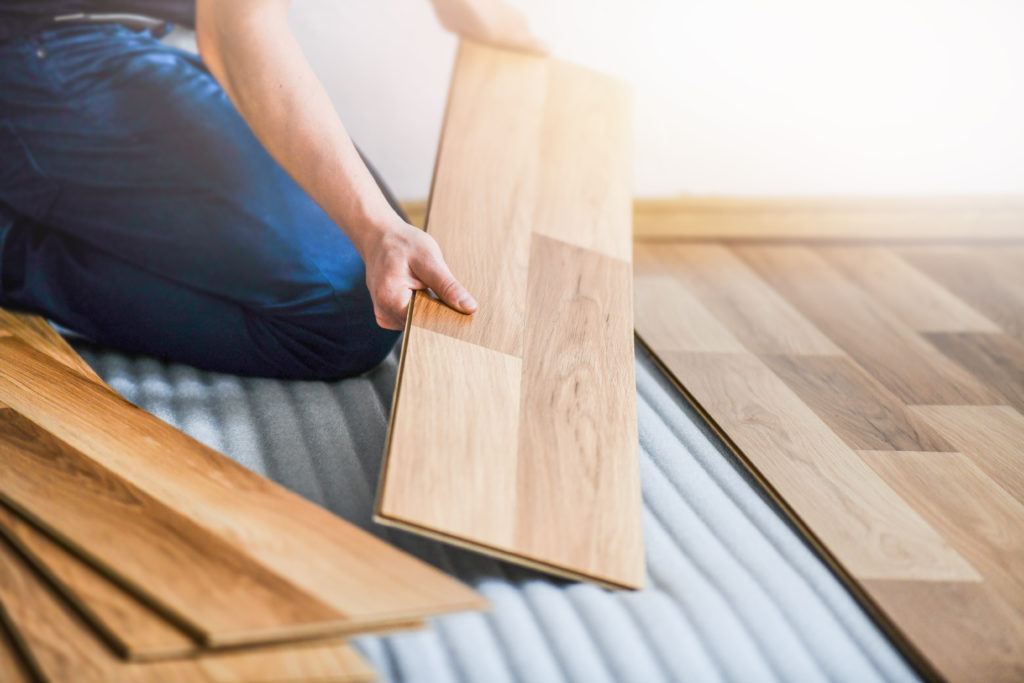
Like most things in life (big sigh), there are advantages and disadvantages of floating floors. The biggest benefit is that floating floors (as the name suggests) don’t need to be nailed or glued down—hence their DIY-friendly installation. On the flip side, they can be creaky if not installed properly and may not last as long.
Solid hardwood installation
Although it’s rarer, solid hardwood boards can also be found as click-together flooring. But more commonly, wood flooring is installed by fixing each board to the subfloor with nails or glue. Our best advice here is to let the professionals handle solid hardwood installation as it can be a tedious process and you definitely want to get it right the first time! It’s also why solid hardwood usually costs more to install.
Where Should I Install Laminate vs. Hardwood Floors?
Laminate can be installed in just about any room
Laminate flooring looks amazing, and most modern varieties are at the very least water-resistant. That means it can be installed in just about any room! Basement? Check. Kitchen? Heck ya! Bathroom? Yep—although it might be worth checking out the differences between tile vs. laminate while you’re at it (just saying).
No matter where you choose to install your laminate floor, make sure you have an underlayment between the subfloor and laminate planks. Some planks come with an underlayment layer attached. If you’re installing in a high moisture room—like a basement—it’s recommended that you also use a vapor barrier to prevent warping or buckling of the floor. Your local flooring folks will let you know exactly what you need for installation.
Engineered hardwood floors can be installed where solid hardwood can’t
One of the biggest disadvantages of solid hardwood flooring is that the boards are prone to shrinking and swelling with variable temperatures. Engineered hardwood, however, can tolerate these changes. That means you can still enjoy the beauty of hardwood floors in the bathroom, kitchen or even the basement.
Whatever type of flooring you choose, be sure to let the boards acclimate to the room for 48 hours prior to installation.
The Look and Feel of a Laminate vs. Hardwood Floor
How does a laminate floor actually look?
Today’s laminate flooring is not your parents’ laminate flooring. Laminate’s photo-realistic image layer can make it incredibly difficult to tell the difference between a laminate and hardwood floor. Like we said before, your guests may never know it’s not real wood. Check out these Pergo reviews to read what people are saying about today’s laminate.
Some people insist that laminate flooring will look fake with a repetitive pattern. Again: that’s the laminate of yesteryear. But if you’re still worried, you can check out this Consumer Reports piece for suggestions on assembling to avoid a redundant pattern.
How does a laminate floor feel?
Thanks to floating floor technology, there’s some give to laminate flooring when you walk on it. If you’re comparing the underfoot feel of laminate flooring to some types of tile, for example, laminate’s going to come out on top. And of course, you can always add some peel-and-stick carpet tiles to your laminate floors for an even cozier feel!
How does a hardwood floor look?
Hardwood flooring—both engineered and solid—comes with many options that contribute to its overall look. You can choose thin strips or wide planks and endless finishes, all depending on the look you’re going for. Either way, you’re walking on real wood—the patterns of the tree species you choose will be unique to your floor.
How does a hardwood floor feel?
The feel of your hardwood floor depends on how it’s installed. If your engineered wood floor is installed as a floating floor, you will get more cushion as you walk as opposed to a wood floor that’s fixed straight to the subfloor. But again, it depends on the installation, the underlayment, etc.
If you’re curious about more “cushioned” flooring options—say for your bedroom—it might be worth looking into the pros and cons of cork flooring.
Maintenance of Laminate vs. Maintenance of Hardwood
Once you decide on the best flooring type for you, be sure to research its recommended cleaning method so you can get the most out of your new floors.
The maintenance for laminate and hardwood flooring is similar: avoid any methods that could saturate the boards with water or cause damage to the surface. The manufacturer should give you specifics, but in general, avoid steam cleaners, wet mops, abrasive chemicals and vacuums with a brush bar.
Laminate vs. Hardwood Flooring—Which is More Durable?
Of these two types of flooring, you’re probably curious as to which is more durable. And… it’s kind of a complicated answer.
See, durability depends on a lot of things. The quality of the base material, the quality of the wood, the quality of the wear layer, etc. You really get what you pay for here. And like we said earlier, there’s a big range when it comes to laminate vs. hardwood cost.
But, we know that’s not a very satisfying answer, so here’s some more information:
Laminate floors are often touted as a heavy-duty option
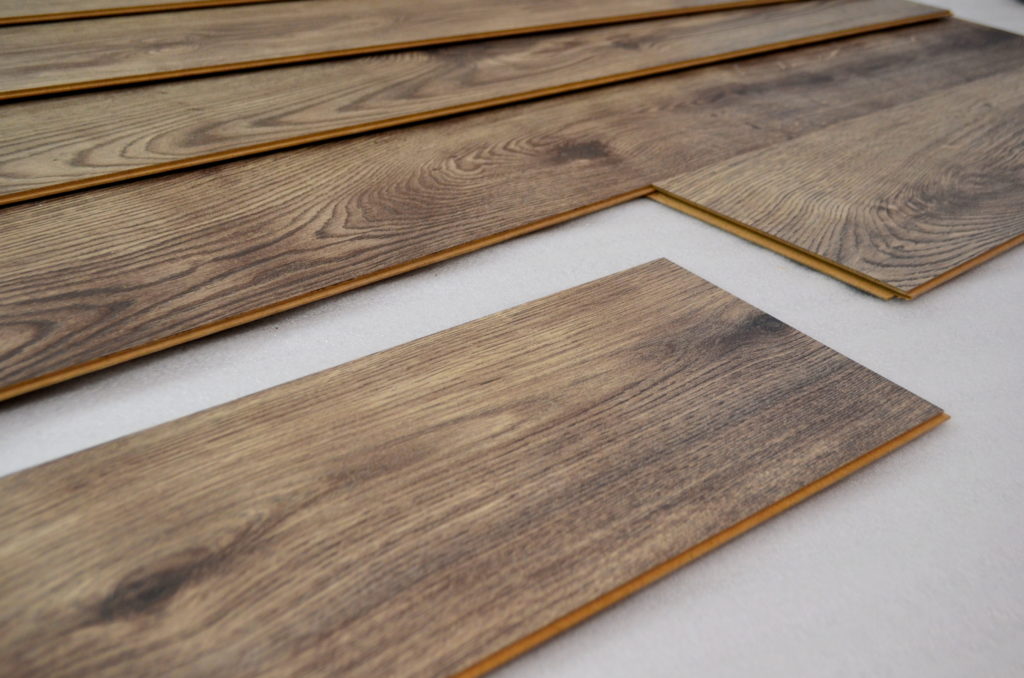
Laminate flooring has really come a long way in the past decade or so. In fact, it has become one of the most durable flooring options around, thanks to its heavy-duty wear layer. It’s designed to resist the scratches and dents caused by life’s activities—pet claws and heavy objects, just to name a couple.
And laminate comes in water-resistant varieties these days
Worried about your floors getting wet? Some types of waterproof laminate are available, but it’s not the norm (and they’re usually not entirely waterproof anyway). There are other waterproof flooring options out there, though—vinyl tile, vinyl sheeting, and tile, just to name a few.
Laminate can not be refinished
While laminate floors can tolerate life’s rough and tumble residents, they can’t be refinished like hardwood floors can. Depending on the extent of the damage your floors face, you may be able to replace affected planks—or you may have to replace your entire floor.
Can hardwood floors be refinished?
In general, engineered and solid hardwood floors are more susceptible to dents and scratches than laminate. The beauty of solid hardwood flooring? They can be refinished many times due to the solid make-up of the boards—solid wood floors can last a lifetime if cared for!
Some engineered hardwood floors can’t be refinished at all, while others can be refinished more than once—it all depends on how thick the veneer layer is. The longevity of your hardwood floors highly depends on the quality of construction and thickness of the veneer!
The Laminate vs. Hardwood Floor Verdict
Ok, let’s go over what we’ve learned, shall we?
Laminate will not cost as much as hardwood on the front end, and is great for a quick make-over. It’s durable and can hold up under life’s most rambunctious residents. And you can potentially install laminate in any room of the house. Plus, laminate planks are DIY-friendly.
Hardwood floors will likely cost more in materials and installation—especially solid hardwood—but they add curb appeal and value to your home. Engineered hardwood is more versatile than solid wood and can be installed just about anywhere that laminate can.
As far as longevity, solid hardwood takes the cake with 100+ years of life, with proper care.
So which is better? It’s up to you! Both options have their pros and cons, and the best choice will depend on your wants and needs. To help you make your choice, use this flooring stores near me tool to find a flooring expert in your area. Still have questions? Check out these topics:
- Types of Flooring Made Simple: The Complete 2020 Guide
- The Best Vinyl Flooring Types: Your Complete Guide
- 10 Tips for Maintaining Your New Floors
- Vinyl Flooring Pros and Cons: What You Need to Know
- Carpet vs. Laminate: Which is the Right Floor for You?
- Your Complete Guide to Bamboo Flooring
- The Best Cork Flooring Options & 11 Reasons They’re Awesome
About The Author

Kimberly Severance
March 9, 2020
Best known as a therapeutic horseback riding instructor and mom to a 3-year old sassy dachshund, Kim enjoys writing and a good research project. She also loves a good DIY project—probably inspired by growing up in an old Connecticut colonial.
